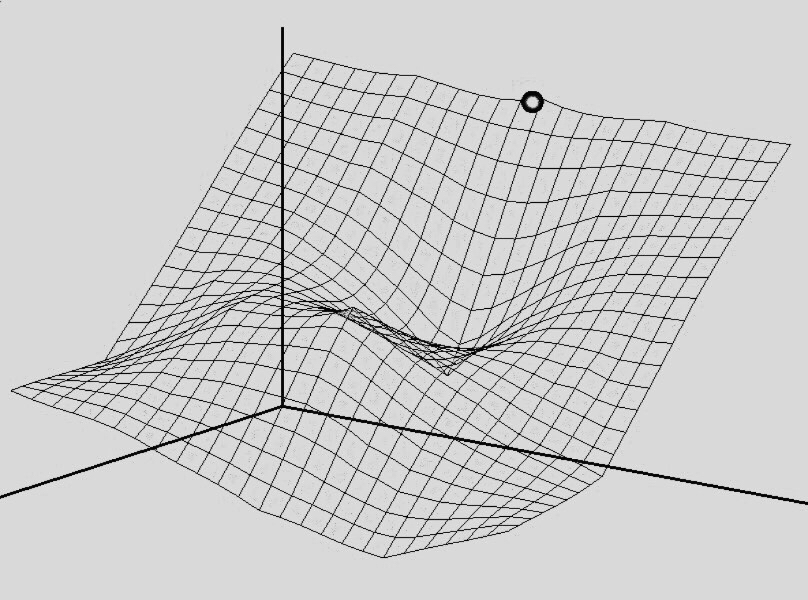Human cells, as well as cells of animals, plants, fungi, and other eukaryotic organisms, originally emerged hundreds of millions of years ago through the symbiotic association of some primitive bacteria that, until then, had lived independently. This represented an unprecedented leap in the complexity of life, where some bacteria, after having resided within cells for a long time, eventually transitioned into becoming organelles of these cells. This transition allowed for the compartmentalization and control of bacterial-derived functions within the eukaryotic cell. CBIOMES Mick Follows contributes to a new paper in the journal Cell.
Read the Institut de Ciences del Mar story
Human cells, as well as cells of animals, plants, fungi, and other eukaryotic organisms, originally emerged hundreds of millions of years ago through the symbiotic association of some primitive bacteria that, until then, had lived independently. This represented an unprecedented leap in the complexity of life, where some bacteria, after having resided within cells for a long time, eventually transitioned into becoming organelles of these cells. This transition allowed for the compartmentalization and control of bacterial-derived functions within the eukaryotic cell.
“This is the endosymbiotic theory, postulated by Lynn Margulis,” notes Francisco Cornejo, a researcher at the Institute of Marine Sciences of the Spanish National Research Council (ICM-CSIC).
“The most notable example of cyanobacteria becoming organelles,” adds Cornejo, “is that of chloroplasts, the photosynthesis factory of the plant cells.” However, these processes began over a billion years ago, making them very challenging to study.
Now, a study featured in the prestigious journal Cell, led by Francisco Cornejo from ICM-CSIC, together with Keisuke Inomura from the University of Rhode Island (USA), focuses on a much more recent symbiotic relationship that “emerged about 100 million years ago, allowing us to explore the evolution of organelle formation in its early stages,” clarifies Cornejo.
The study focuses on the marine symbiosis between the cyanobacterium C. Atelocyanobacterium thalassa (known as UCYN-A) and the haptophyte microalga species Braarudosphaera bigelowii.
“UCYN-A is an endosymbiotic cyanobacterium, which means living completely inside its host cell,” explains Jonathan Zehr, a researcher at the University of California (USA), “and has lost many typical cyanobacterial genes, suggesting that it could be evolving towards becoming an organelle”.
Symbionts and organelles with similar size proportions
The researchers have examined the relationship between the size of cyanobacteria, organelles, and microalgal cells in closely related species of B. bigelowii inhabiting different zones of the Pacific Ocean.
Having a broad spectrum of samples from different oceanic regions allowed the researchers to observe symbiotic relationships of different sizes, which was crucial for discovering that there was a preserved size proportion among the microorganisms involved in this symbiosis.
Despite B. bigelowii being microscopic algae, they show a remarkable variation in the length of their cells (ranging from 2-3 micrometers for the smallest microalga species up to 20-30 micrometers for the largest species). All of them harbor genetically distinct but closely related lineages of UCYN-A. In all cases, there is a constant size ratio between the size of the microalgae and the size of their endosymbiotic cyanobacteria, meaning that the size of the endosymbiotic cyanobacteria varies proportionally to the size of the microalgal cell.
The study demonstrates, and here is the novelty, that the relationship between the cell size of B. bigelowii and the size of the cyanobacterium UCYN-A is proportional and very similar to the size relationship observed between eukaryotic cells and their organelles.
“We found that the size relationship reflects the optimization of costs and benefits of a coordinated metabolism, maximizing the fitness of this symbiotic partnership and, more generally, eukaryotic cells,” explains Mick Follows, co-author of the study and researcher at the Massachusetts Institute of Technology (USA).
The relationship between the cyanobacterium UCYN-A and the microalga B. bigelowii is defined as an obligate symbiosis. The cyanobacterium cannot live independently, notes Cornejo, “because it lacks metabolic pathways to obtain some essential nutrients; and here its microalgal host comes into play by providing what the cyanobacterium cannot synthesize on its own.” In return, the cyanobacterium UCYN-A has the unique ability of catalyzing the chemical transformation of atmospheric nitrogen gas into ammonia through a process known as nitrogen fixation. So, UCYN-A provides its host with ammonia, a limiting nutrient difficult to obtain in many oceanic areas. Thus, the authors suggest that the cyanobacterium UCYN-A could be in the process of becoming a nitrogen-fixing organelle, the nitroplast.
Due to the striking similarity between this symbiosis and those that led to organelles over a thousand million years ago, the study concludes that cell size proportions play a fundamental role in symbiotic relationships that gave rise to the development of more complex cellular structures in eukaryotic cells, such as mitochondria or chloroplasts, which opens a new perspective for studying fundamental processes in the evolution of life.
Story image: Photograph of the symbiosis between the haptophyte alga B. bigelowii and the cyanobacterium UCYN-A (courtesy of Wing Kwan Esther Mak and Kyoko Hagino) / Bottom image: Composite of images taken with epifluorescence microscopy of different lineages with different cell sizes of the symbiosis between B. bigelowii and UCYN-A.
Related publication:
Francisco M. Cornejo-Castillo, Keisuke Inomura, Jonathan P. Zehr, Michael J. Follows (2024), Metabolic trade-offs constrain the cell size ratio in a nitrogen-fixing symbiosis, Cell, doi: 10.1016/j.cell.2024.02.016


